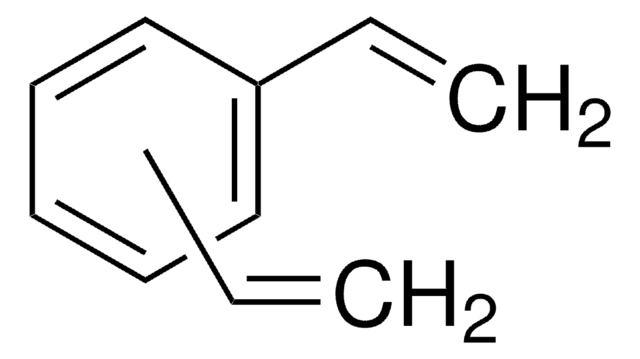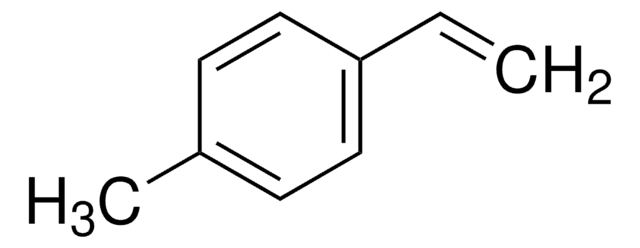240869
Styrol
ReagentPlus®, 99.9%
Synonym(e):
Phenylethylen, Vinylbenzol
About This Item
Empfohlene Produkte
Dampfdichte
3.6 (vs air)
Dampfdruck
12.4 mmHg ( 37.7 °C)
4.3 mmHg ( 15 °C)
Produktlinie
ReagentPlus®
Assay
99.9%
Form
liquid
Selbstzündungstemp.
914 °F
Enthält
10-15 ppm 4-tert-butylcatechol as inhibitor
Expl.-Gr.
6.1 %
Brechungsindex
n20/D 1.546 (lit.)
bp
145-146 °C (lit.)
mp (Schmelzpunkt)
−31 °C (lit.)
Dichte
0.906 g/mL at 25 °C
Lagertemp.
2-8°C
SMILES String
C=Cc1ccccc1
InChI
1S/C8H8/c1-2-8-6-4-3-5-7-8/h2-7H,1H2
InChIKey
PPBRXRYQALVLMV-UHFFFAOYSA-N
Suchen Sie nach ähnlichen Produkten? Aufrufen Leitfaden zum Produktvergleich
Rechtliche Hinweise
Ersetzt durch
Signalwort
Danger
Gefahreneinstufungen
Acute Tox. 4 Inhalation - Aquatic Chronic 3 - Asp. Tox. 1 - Eye Irrit. 2 - Flam. Liq. 3 - Repr. 2 - Skin Irrit. 2 - STOT RE 1 Inhalation - STOT SE 3
Zielorgane
hearing organs, Respiratory system
Lagerklassenschlüssel
3 - Flammable liquids
WGK
WGK 2
Flammpunkt (°F)
89.6 °F - closed cup
Flammpunkt (°C)
32.0 °C - closed cup
Persönliche Schutzausrüstung
Eyeshields, Faceshields, Gloves, type ABEK (EN14387) respirator filter
Hier finden Sie alle aktuellen Versionen:
Besitzen Sie dieses Produkt bereits?
In der Dokumentenbibliothek finden Sie die Dokumentation zu den Produkten, die Sie kürzlich erworben haben.
Kunden haben sich ebenfalls angesehen
Unser Team von Wissenschaftlern verfügt über Erfahrung in allen Forschungsbereichen einschließlich Life Science, Materialwissenschaften, chemischer Synthese, Chromatographie, Analytik und vielen mehr..
Setzen Sie sich mit dem technischen Dienst in Verbindung.










